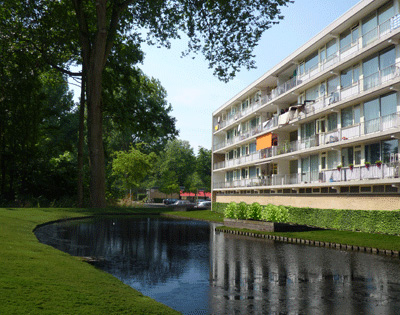Social Quality Strategy Gillis Neighborhood
- Analysis and design: Krill-o.r.c.a.
- Design team: Harmen van de Wal e.a.
- Client: Woonbron Delft
Krill-o.r.c.a. did a research to the legibility of the privacyscript of Gillis neighborhood, commissioned by Woonbron Delft.
When the research was conducted, the neighborhood was considered unsafe by many of its inhabitants. The research showed that Gillis, once a popular example of ecologic housing, was poorly legible. Places that should allow social control were full of blind spots, galleries were accessible for everyone and impersonal, but too narrow for the public use that fits these properties. Backsides of dwellings on the first floor were easily reached from the public park, making it difficult for the inhabitants to control access to their private realm.
Legible privacyzones offer agency to people. When it is clear who is responsible for a place, others can anticipate, knowing what kind of people to expect, whether intimately known, friend, or stranger impacts how people will choose to interact. In this respect, if a living environment is not legible, this will negatively affect people’s agency.
After the analysis, we could propose simple interventions to improve legibility, and therefore livability. A narrow gallery is unpleasant if it is a public space, but the space will be suitable for collective or private use. By making it possible to close off the gallery and giving it to a collective of inhabitants to maintain, the privacyscript would be better legible. When a collective was not desirable, the gallery could be made parochial (a neighborhood realm). In that case, a transition zone between gallery and apartment was installed to create distance and the opportunity to personalise. Similarly, an apartment building can fit perfectly in an open public park environment, provided there is enough distance to the back of the houses.
